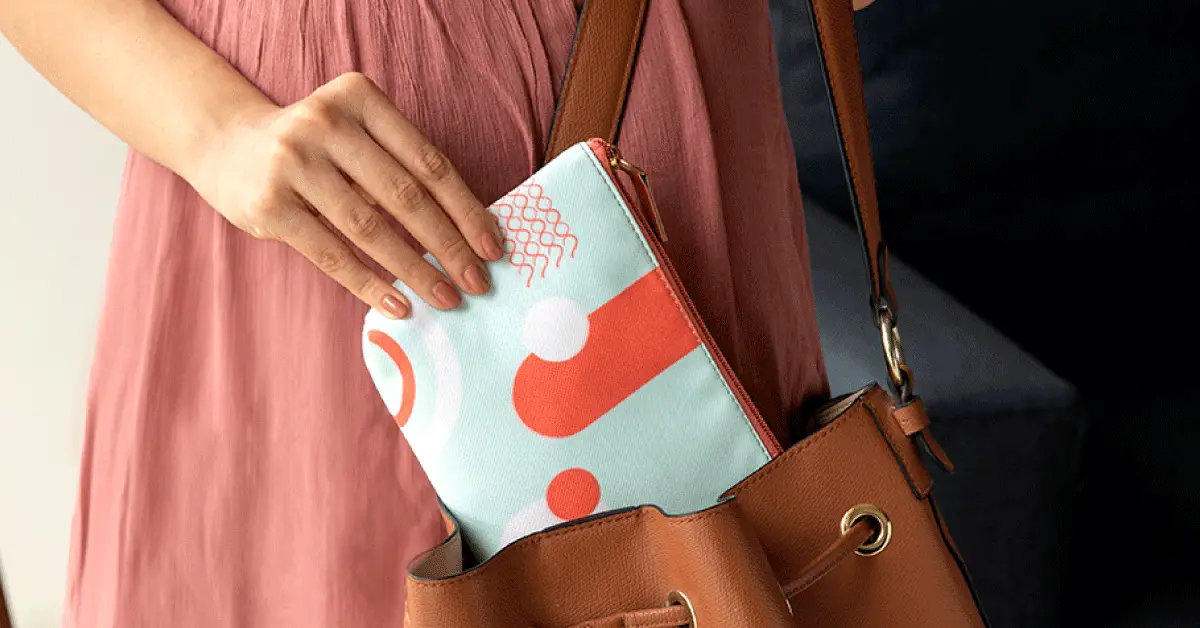A period kit or period pack is just a little bag that contains the supplies you would require for a period.
Therefore, if you’re a mother, it’s a bag that your child will carry with them to handle her period while they’re away from home. They might store it in their gym bag, college locker, or school bag.
These may only have one period kit, or they may have several. Additionally, it comes stocked with everything your child requires to maintain their period throughout the day.
Children are terrified that their period would start while they are at school. Additionally, kids won’t be aware that it has begun until they’re lightly touched on the shoulder and have the news whispered into their ears that they have blood on the back of their school uniform. as soon as everyone in the school has seen it!
Therefore, having a period pack reduces their concern since they are aware that they will be okay if their first period begins while they are at school. Since they are equipped, they can do it!
They feel more empowered and are less anxious about their first period because they have a few items in their school bag.
Make your own period kit
The bare minimum for a period kit should include:
tampons or sanitary pads as they get older. extra underwear in case they leak; you can find fantastic underwear that fits young tweens well and will stop the leakage there.
If a bin is not readily available, use plastic bags to store damaged underwear or to store used napkins.
In just case they have to clean up blood off their hands before leaving the restroom, cleaning wipes or hand cleanser should be available.
There are several additional items you can add as well, like analgesics, tampons, hot packs, and anything else you can think of that would be essential. Just keep in mind that it must be compact and lightweight.
You’ll need to have a period pack that is sufficient to accommodate everything inside, tiny enough to be undetectable, and built so that they can hold the bag on their lap while performing their duties.
Someone using a pencil case is quite discrete, as We read recently. And pick something that could be washed or wiped off.
A period kit is an essential part of menstrual hygiene management, offering convenience and comfort during menstruation. Whether you’re a first-time buyer or looking to upgrade your current kit, understanding the options available and how to use them effectively is key. Here’s a comprehensive guide to help you make an informed choice:
Types of Period Kits
1. Menstrual Cups:
- Advantages:
- Environmentally friendly, as they can be reused for several years.
- Cost-effective in the long run compared to disposable products.
- Can be worn for up to 12 hours, offering extended protection.
- Suitable for various levels of menstrual flow.
- Disadvantages:
- Initial learning curve for insertion and removal.
- Requires access to clean water for proper maintenance.
- Not suitable for those uncomfortable with internal products.
2. Disposable Menstrual Pads:
- Advantages:
- Easy to use and dispose of.
- Available in various absorbencies to suit different flow levels.
- No learning curve; suitable for beginners.
- Disadvantages:
- Generate waste and contribute to environmental pollution.
- Regular ongoing cost.
- May cause discomfort or skin irritation in some individuals.
3. Period Panties:
- Advantages:
- Reusable and eco-friendly option.
- Absorbent layers built into the fabric provide leak protection.
- No need for additional products like pads or tampons.
- Disadvantages:
- May feel bulky or uncomfortable for some users.
- Requires washing and drying after each use.
- Initial cost is higher than disposable pads.
4. Organic Tampons:
- Advantages:
- Compact and discreet for easy carry.
- Suitable for those preferring internal products.
- Available in different absorbencies.
- Disadvantages:
- Regular ongoing cost.
- Increased risk of toxic shock syndrome if not changed frequently.
- Waste generated from applicators unless using applicator-free options.
How to Use Your Period Kit
1. Menstrual Cups:
- Wash your hands thoroughly before insertion.
- Fold the cup and insert it into the vagina, allowing it to unfold and form a seal.
- Empty the cup every 4-12 hours depending on flow, rinse with water, and reinsert.
2. Disposable Menstrual Pads:
- Remove the adhesive strip cover and place the pad in your underwear.
- Change the pad every 4-6 hours or as needed to maintain comfort and hygiene.
- Dispose of used pads in a sanitary manner.
3. Period Panties:
- Wear like regular underwear; choose the absorbency level based on your flow.
- Change as needed throughout the day; rinse with cold water before machine washing.
- Air dry or tumble dry on low heat.
4. Organic Tampons:
- Wash hands before use.
- Insert the tampon into the vagina using the applicator or your finger.
- Change every 4-8 hours to reduce the risk of infection or discomfort.
Choosing the right period kit depends on your personal preferences, lifestyle, and comfort level with different products. Each type offers unique advantages and disadvantages, so consider factors like convenience, environmental impact, and cost before making your decision. Remember to maintain good hygiene practices and consult with a healthcare professional if you have specific concerns about menstrual products. With the right kit, managing your period can be comfortable, sustainable, and hassle-free.












